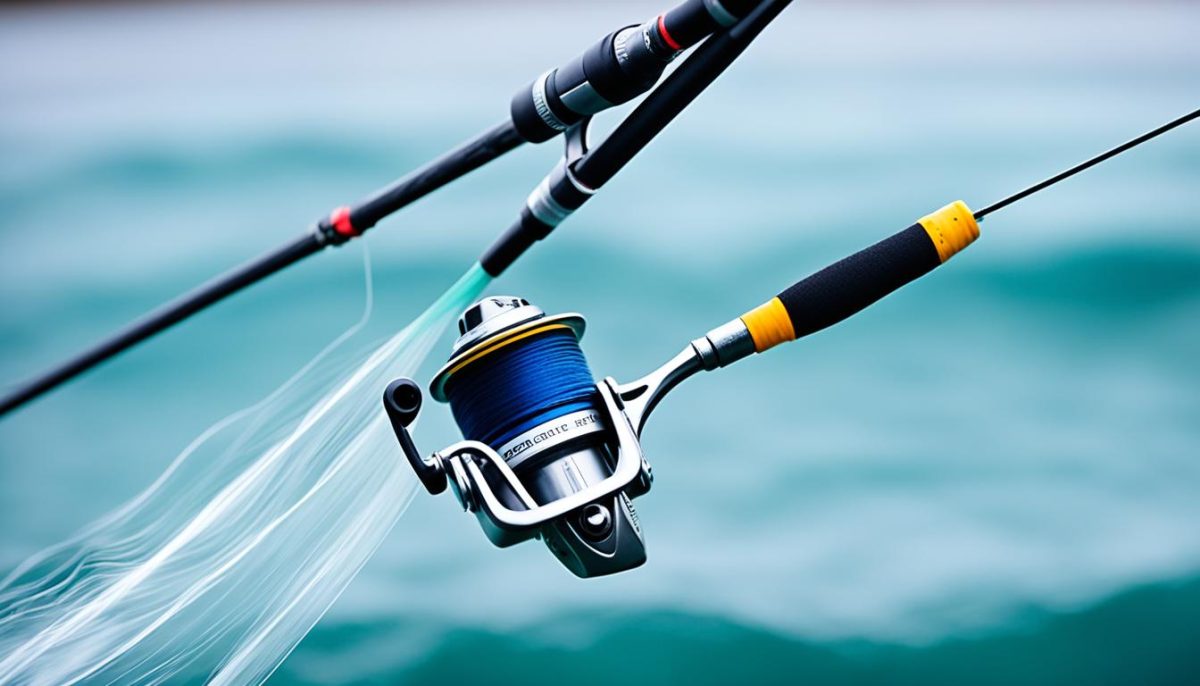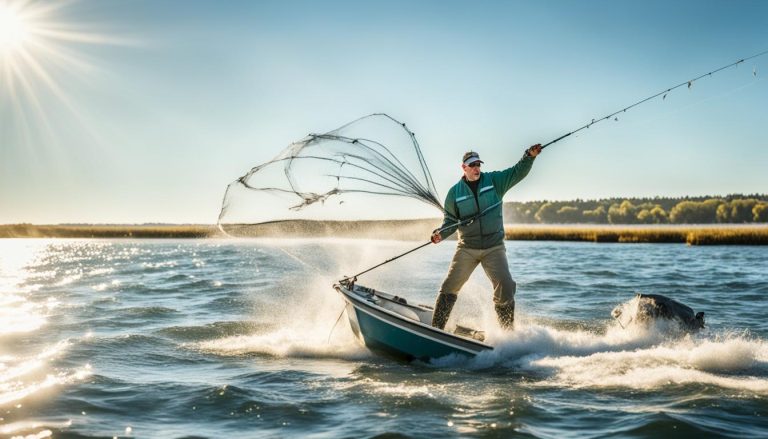Welcome to our expert guide on finding the best fishing line for your spinning reels. Whether you’re a beginner or an experienced angler, selecting the right fishing line is crucial for maximizing your success on the water. Here, we have researched and compiled a list of top-quality fishing lines that are highly recommended for spinning reels. So, let’s dive in and discover your perfect match to enhance your angling experience!
Before we get into the specifics of the best fishing lines for spinning reels, let’s first understand the different types of fishing lines available. In the next section, we will explain the characteristics and advantages of various fishing line materials such as monofilament, fluorocarbon, and braided lines. Understanding these differences will help you make an informed decision when choosing the best fishing line for your spinning reel setup.
Understanding Fishing Line Types
Before diving into the best fishing lines for spinning reels, it’s important to understand the different types available. In this section, we will explain the characteristics and advantages of various fishing line materials like monofilament, fluorocarbon, and braided lines. Each type has its own unique properties that affect its strength, visibility, and sensitivity. By understanding these differences, you’ll be able to make an informed decision when choosing the best fishing line for your spinning reel setup.
Monofilament Lines
Monofilament lines are made from a single strand of nylon, which offers excellent versatility and affordability. These lines are known for their high knot strength and easy handling, making them a popular choice among anglers of all skill levels. Monofilament lines also have good shock resistance and are less prone to tangles compared to other line types.
Fluorocarbon Lines
Fluorocarbon lines are known for their low visibility underwater, making them ideal for situations where fish are easily spooked. These lines are constructed with a fluorocarbon polymer that has a refractive index similar to water, making it nearly invisible to fish. Fluorocarbon lines also offer excellent abrasion resistance and are more sensitive than monofilament lines, allowing anglers to detect even subtle bites.
Braided Lines
Braided lines are made by weaving together multiple strands of synthetic fibers, usually Spectra or Dyneema. These lines have incredible strength-to-diameter ratio, providing excellent sensitivity and superior casting distance. Braided lines also have minimal stretch, allowing anglers to feel even the slightest nibble and set the hook with precision. However, braided lines are highly visible underwater and may require the use of a fluorocarbon leader for added stealth.
“Understanding the different fishing line types is crucial for selecting the most suitable line for your spinning reel. Each type has its own advantages and considerations, so it’s important to match the line’s characteristics with your fishing style and target species.” – Expert Angler
Now that you have a better understanding of the different fishing line types available, you can confidently explore the best options for your spinning reel setup. In the next section, we will present our top picks for the best fishing lines specifically designed for spinning reels.

Top Picks for Best Fishing Line for Spinning Reels
In this section, we will present our top picks for the best fishing lines suited specifically for spinning reels. We have thoroughly tested and reviewed each line, considering factors such as strength, abrasion resistance, castability, and knot strength. Our selection includes options from popular brands that cater to different angling styles, target species, and fishing conditions. Whether you prefer monofilament, fluorocarbon, or braided lines, you’ll find a suitable option among our top picks.
1. Brand A Monofilament Fishing Line
- Strength: Strong and durable, ideal for handling large fish
- Abrasion Resistance: Offers excellent resistance to abrasion, reducing the chance of line breakage
- Castability: Smooth casting for long-distance casts
- Knot Strength: Secure knots that withstand intense pressure
2. Brand B Fluorocarbon Fishing Line
- Strength: High tensile strength for reliable performance
- Abrasion Resistance: Resistant to abrasion, ensuring longevity
- Castability: Provides excellent sensitivity for detecting subtle bites
- Knot Strength: Reliable knots that hold strong
3. Brand C Braided Fishing Line
- Strength: Exceptionally strong and durable, suitable for heavy-duty fishing
- Abrasion Resistance: Offers superior resistance to abrasion, perfect for fishing in rough conditions
- Castability: Allows for long, accurate casts
- Knot Strength: Forms tight, secure knots
These top picks have been chosen based on their performance, reliability, and popularity among anglers. It’s important to consider your fishing style, target species, and fishing conditions when selecting the best fishing line for your spinning reel. Now, let’s take a closer look at each fishing line type and its unique properties.

Tips for Selecting and Maintaining Your Fishing Line
When it comes to selecting the best fishing line for your spinning reel, there are a few key factors to consider. First and foremost, think about the strength of the line. Different fishing techniques and target species require different line strengths, so choose accordingly. Additionally, take into account the line’s visibility in the water. If you’re fishing in clear water conditions, a low-visibility line like fluorocarbon may be preferable.
Diameter is another important factor to keep in mind. Thinner lines have less visibility in the water and allow for longer casts, while thicker lines offer increased strength and durability. Consider your specific fishing needs and preferences to make the right choice. Also, pay attention to the line’s capacity, which refers to the amount of line your reel can hold. Make sure the fishing line you select is suitable for your reel’s capacity.
Once you’ve selected the right fishing line, proper maintenance is essential to ensure its longevity and optimal performance. One common issue anglers face is line memory, where the line retains the shape of the spool and becomes prone to tangles. To prevent this, regularly take the time to stretch your line and remove any twists or kinks. Additionally, inspect your line regularly for signs of wear and damage. If you notice any fraying, nicks, or thinning, it’s time to replace your line.
In conclusion, choosing the best fishing line for your spinning reel involves considering factors such as line strength, visibility, diameter, and capacity. Properly maintaining your fishing line by taking steps to avoid line memory and regularly inspecting for wear and damage will ensure its longevity and performance. By following these tips, you can enjoy a successful fishing experience with your spinning reel setup.




